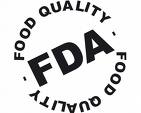 It’s fair to say that the United States has not yet tiptoed into the waters of regulating nanotechnology directly. Rather, new efforts at regulation of chemicals and consumer products tend toward indirect regulation. That is, these efforts would strengthen and expand existing federal regulation. Two examples are recent bills introduced in the House of Representatives that would amend the Toxic Substances Control Act (TSCA) and the Food Drug and Cosmetic Act (FDCA) for substances and products that may or may not contain nanomaterials. As discussed in a previous entry in this blog, placing nanomaterials under the same regulatory standards as non-nano substances is a subject that requires discussion on its own.
It’s fair to say that the United States has not yet tiptoed into the waters of regulating nanotechnology directly. Rather, new efforts at regulation of chemicals and consumer products tend toward indirect regulation. That is, these efforts would strengthen and expand existing federal regulation. Two examples are recent bills introduced in the House of Representatives that would amend the Toxic Substances Control Act (TSCA) and the Food Drug and Cosmetic Act (FDCA) for substances and products that may or may not contain nanomaterials. As discussed in a previous entry in this blog, placing nanomaterials under the same regulatory standards as non-nano substances is a subject that requires discussion on its own.
Is the current trend toward indirect regulation a good idea? It’s certainly easier and more efficient in the short run to promulgate broad regulations that encompass a variety of substances and uses, and to amend existing statutes. And there is no doubt that these statutes needed updating to reflect scientific advancement and new risks. But there is a danger that regulators – and the public – would be left with the impression that once these statutes have been updated, all substances are sufficiently regulated. With the products of nanotechnology being so diverse, it is likely that many substances would slip through the cracks of the new legislation.
Let’s look at the two recently introduced bills. The Toxic Chemicals Safety Act of 2010 (H.R. 5820) would amend TSCA by requiring the chemical industry to provide EPA with minimum essential data on chemical characteristics, toxicity, exposure, and use, whereupon EPA would undertake an expedited process to reduce exposures to toxic substances in the population. An important feature of the bill provides for public disclosure of non-confidential and otherwise non-exempt information. The text of the bill may be found at
http://energycommerce.house.gov/documents/20100722/HR5820.pdf
The current text of TSCA is at 15 U.S.C. §§ 2601 et seq.
The other recently introduced bill is the Safe Cosmetics Act of 2010 (H.R. 5786), which contains provisions for protecting consumers from carcinogenic and other toxic ingredients in certain previously unregulated household products, such as perfumes, shaving creams, shampoos, and deodorants. Like the proposed TSCA amendment, a major purpose of this bill is to update the existing FDCA and its regulations and to disclose the information regarding hazards to the public, in this case primarily through product labels. Currently, the cosmetics industry is mostly self-regulated, and members of the industry have complained that this new bill lacks appropriate standards and would place an undue burden on the FDA. Instead, the industry has proposed its own new requirements.
H.R. 5786 also references nanoparticles, clearly indicating that nanotechnology was intended to be part of the amendment. For example, Sec. 618(a)(5) requires that cosmetic manufacturers submit various information to the FDA, including “the ingredient list as it appears on the cosmetic label or insert, including the particle size of any nanoscale cosmetic ingredients.” Sec. 618(e) goes on to authorize the Secretary of Health and Human Services to require that
“(1) minerals and other particulate ingredients be labeled as ‘nano-scale’ on a cosmetic ingredient label or list if not less than 1 dimension is 100 nanometers or smaller for not less than 1 percent of the ingredient particles in the cosmetic; and
(2) other ingredients in a cosmetic be designated with scale-specific information on a cosmetic ingredient label or list if such ingredients possess scale-specific hazard properties.”
The text of this bill may be found at
http://www.govtrack.us/congress/billtext.xpd?bill=h111-5786
Both bills seem to be a step in the right direction. But in the context of nanotechnology, complicated questions persist. For example:
● Would these updated statutes reach the products of nanotechnology as effectively as they would reach substances and products that have no nano-contents?
● Because benign substances may behave differently at the nanolevel, would such regulation miss potential toxic effects?
● What science would be behind the decisions to disclose toxicity?
● Should nanotechnology be regulated separate from chemicals and consumer products?
● Which alternative makes the most sense?
These and others are the questions that Congress and regulators – and all those who may be potentially exposed – need fully discussed in the coming months and years.





